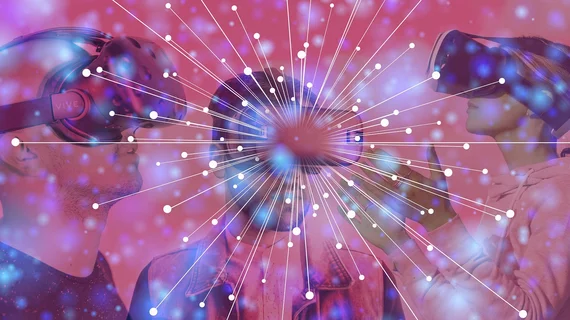Radiographers gain a tremendous amount of technological and scientific expertise in diagnostic imaging, and three-dimensional virtual reality training can be a helpful tool for developing these skills.
University College Dublin’s School of Medicine recently piloted its immersive 3D approach in an undergraduate radiography curriculum, allowing students to first passively learn via VR and later x-ray a virtual patient using a headset and hand controllers.
Overall, most students said they had a good experience with the technology, and more than half “enjoyed” the simulation. An overwhelming 94% claimed they would recommend the tool to their peers, authors reported Aug. 13 in Radiography.
And based on this positive feedback, first author Michelle O’Connor, with the Dublin, Ireland, university, and colleagues said they have expanded their VR offerings and will make the tools available next academic year.
“Based on the positive user feedback in this pilot study, we have invested in additional VR suites to provide further opportunities for student engagement in VR simulation-based learning,” O’Connor et al. wrote Thursday. “We anticipate this tool will be invaluable to our students during the COVID-19 global health pandemic, with a greater proportion of online education delivery required.”
The researchers introduced a 3D virtual tool created by Virtual Medical Coaching to 105 first-year radiography students. Prior to using the modality, students watched a training video guiding them through patient anatomy, radiographic positioning and pathology.
Afterward, the learners completed an x-ray exam of a virtual patient and received a short performance report with information regarding gross pathology, regional patient position, regional anatomy, tube positioning, radiation dose, radiation safety and patient wellbeing. O’Connor and colleagues then set out to determine user feedback via an online survey.
In total, 83 students responded and a majority (58%) said they “enjoyed” the VR simulation, with 27% feeling “indifferent.” It took, on average, 60 minutes to feel comfortable with the headset and controllers, but 58% said they wanted more VR access. Another 55% said it should be used in “low stakes” assessments.
Virtual immersion bolstered students’ confidence in a number of areas including, beam collimation (75% of respondents), anatomical marker placement (63%), centering the x-ray tube (64%), and selection radiation exposure parameters (56%).
O’Connor and colleagues did point out that many students said the lack of immediate feedback from 3D VR “hindered” their learning. They added these technologies are by no means meant to fully replace traditional approaches.
“It should be noted that VR was deemed a useful learning resource to supplement, not replace, existing clinical skills labs and clinical placement,” they concluded. “The findings of this study will be used to improve and expand integration of VR in the next iteration of the undergraduate radiography curriculum.”

